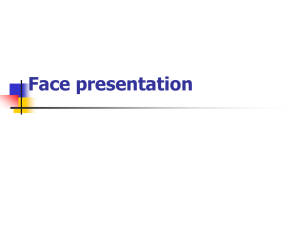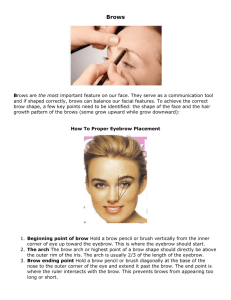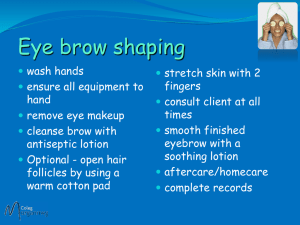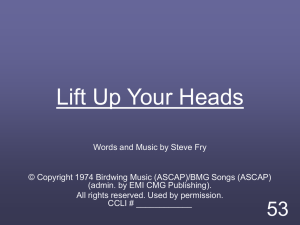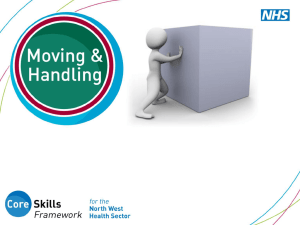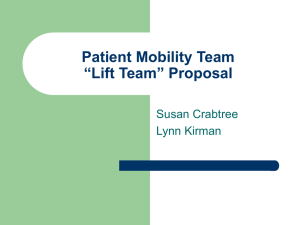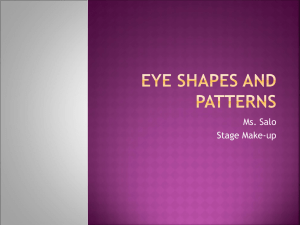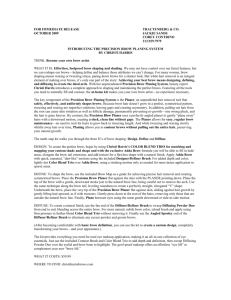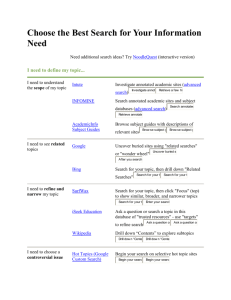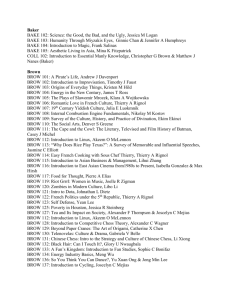The Lateral Subcutaneous Brow Lift under Local Anesthesia
advertisement
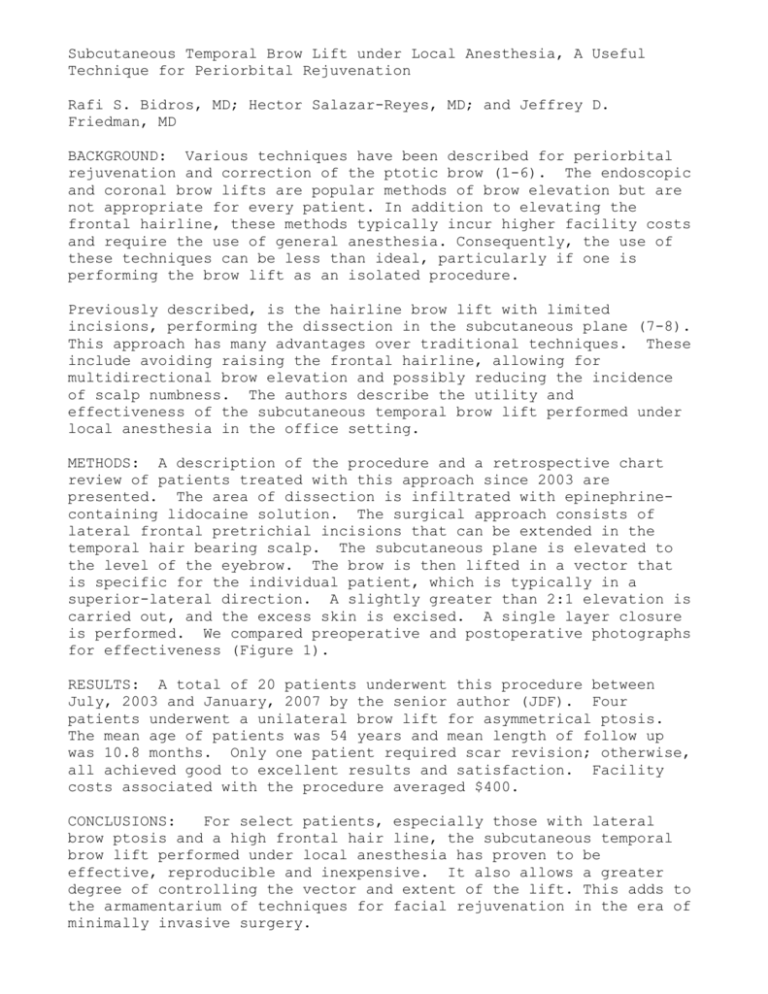
Subcutaneous Temporal Brow Lift under Local Anesthesia, A Useful Technique for Periorbital Rejuvenation Rafi S. Bidros, MD; Hector Salazar-Reyes, MD; and Jeffrey D. Friedman, MD BACKGROUND: Various techniques have been described for periorbital rejuvenation and correction of the ptotic brow (1-6). The endoscopic and coronal brow lifts are popular methods of brow elevation but are not appropriate for every patient. In addition to elevating the frontal hairline, these methods typically incur higher facility costs and require the use of general anesthesia. Consequently, the use of these techniques can be less than ideal, particularly if one is performing the brow lift as an isolated procedure. Previously described, is the hairline brow lift with limited incisions, performing the dissection in the subcutaneous plane (7-8). This approach has many advantages over traditional techniques. These include avoiding raising the frontal hairline, allowing for multidirectional brow elevation and possibly reducing the incidence of scalp numbness. The authors describe the utility and effectiveness of the subcutaneous temporal brow lift performed under local anesthesia in the office setting. METHODS: A description of the procedure and a retrospective chart review of patients treated with this approach since 2003 are presented. The area of dissection is infiltrated with epinephrinecontaining lidocaine solution. The surgical approach consists of lateral frontal pretrichial incisions that can be extended in the temporal hair bearing scalp. The subcutaneous plane is elevated to the level of the eyebrow. The brow is then lifted in a vector that is specific for the individual patient, which is typically in a superior-lateral direction. A slightly greater than 2:1 elevation is carried out, and the excess skin is excised. A single layer closure is performed. We compared preoperative and postoperative photographs for effectiveness (Figure 1). RESULTS: A total of 20 patients underwent this procedure between July, 2003 and January, 2007 by the senior author (JDF). Four patients underwent a unilateral brow lift for asymmetrical ptosis. The mean age of patients was 54 years and mean length of follow up was 10.8 months. Only one patient required scar revision; otherwise, all achieved good to excellent results and satisfaction. Facility costs associated with the procedure averaged $400. CONCLUSIONS: For select patients, especially those with lateral brow ptosis and a high frontal hair line, the subcutaneous temporal brow lift performed under local anesthesia has proven to be effective, reproducible and inexpensive. It also allows a greater degree of controlling the vector and extent of the lift. This adds to the armamentarium of techniques for facial rejuvenation in the era of minimally invasive surgery. Figure 1. Preoperative and Postoperative photographs of three patients who underwent the subcutaneous temporal brow lift as an isolated procedure. REFERENCES 1. Passot RL. Chirurgie esthetique pure: techniques et resutats. Paris, Gaston Dorn et Cie, 1930. 2. Gonzalez-Ulloa M. Facial wrinkles—integral elimination. Plast Reconstr Surg 29:659, 1962. 3. Gurdin MD, Carlin GA. Aging defects in the male: a regional approach to treatment. In: Marten FW, Lewis JR (eds), Symposium on Aesthetic Surgery of the Face, Eyelids, and Breast. St Louis, Mosby, 1972. 4. Gleason MC. Brow-lift through a temporal scalp approach. Plast Reconstr Surg 52:141, 1973. 5. Knize DM. Limited-incision forehead lift for eyebrow elevation to enhance upper blepharoplasty. Plast Reconstr Surg 1996;97:1334. 6. Core GB, Vasconez LO, Askren C. Coronal face lift with endoscopic techniques. Plast Surg Forum XV:227, 1992 7. Guyuron B, Davies B. Subcutaneous anterior hairline forehead rhytidectomy. Aesthetic Plast. Surg. 12: 77, 1988. 8. Miller TA, Rudkin G, Honig M, Elahi M, Adams J. Lateral subcutaneous brow lift and interbrow muscle resection: clinical experience and anatomic studies. Plast Reconstr Surg. 2000 Mar;105(3):1120-7; discussion 1128.
